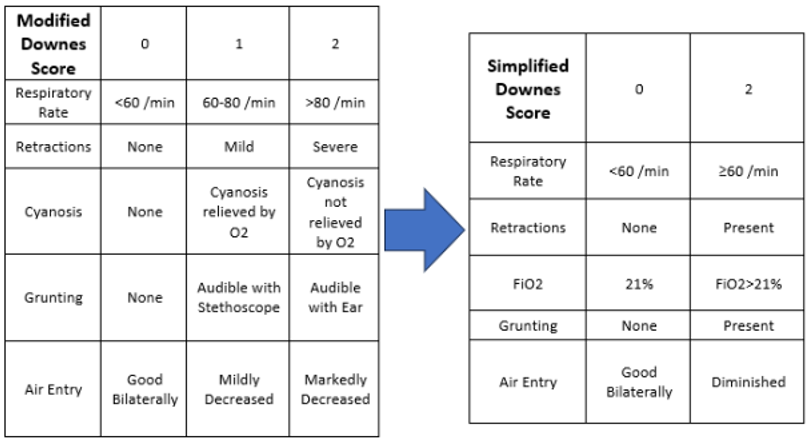Neonatology
Session: Neonatal General 7: Respiratory
250 - Does a simplified Downes score predict the receipt of surfactant in a highly resourced setting?
Monday, May 6, 2024
9:30 AM - 11:30 AM ET
Poster Number: 250
Publication Number: 250.3071
Publication Number: 250.3071
- WC
William Chotas, MD
Neonatology Fellow
The University of Vermont Children's Hospital
Colchester, Vermont, United States
Presenting Author(s)
Background: The recently published RDS-NeXT Workshop consensus statement recommends the use of the modified Downes score as a clinical examination scoring tool, in addition to FiO2, continuous positive airway pressure (CPAP) level, and pH/pCO2 to guide surfactant administration. Although the modified Downes score is frequently used in low resourced settings to guide initiation of CPAP and has demonstrated good inter-rater reliability, the extent to which this score predicts CPAP failure and the receipt of surfactant in highly resourced neonatal intensive care units (NICUs) is unknown.
Objective: To determine if a simplified Downes score of infants admitted on CPAP predicts their receipt of surfactant.
Design/Methods: The modified Downes score was simplified to enable retrospective chart review from nursing documentation (Figure 1). The primary outcome was receipt of surfactant, with or without mechanical ventilation. Included infants were inborn between January 2018-December 2022, had birth weights ≤2000 g, gestational ages ≥25 weeks, and were admitted to the NICU on nasal CPAP. We excluded cases that had discordant documentation between nurses and physicians, and infants with known congenital anomalies. We calculated the sensitivity, specificity, positive predictive value (PPV) and negative predictive value (NPV) for both the total score and the individual components of the simplified Downes score for the receipt of surfactant.
Results: Of the 202 infants meeting inclusion criteria, 168 infants were admitted on CPAP, and 53 (31.5%) received surfactant therapy (Table 1). 34 (16.8%) infants were excluded due to discordant or incomplete documentation. A simplified Downes score of ≥4 predicted the receipt of surfactant with a sensitivity of 90.6%, specificity of 52.2%, PPV of 46.6%, and NPV of 92.3% (Table 2). The predictive value of the individual components of the simplified Downes score are displayed in Table 2. As the simplified Downes score increased, the likelihood of receiving surfactant increased (36% of infants with a score of 4, 51% with a score of 6, and 82% with a score of ≥8).
Conclusion(s): Objective assessment of infants on nasal CPAP with a simplified Downes score may help predict which infants require surfactant. In our retrospective analysis, a score of ≥4 provided appropriate sensitivity and specificity for receipt of surfactant, with a high NPV for a score < 4.
The modified Downes score, or a simplified version as used in this study, should be considered in the evaluation of infants for receipt of surfactant as recommended by the RDS-NeXT Workshop consensus statements.

.png)
.png)
